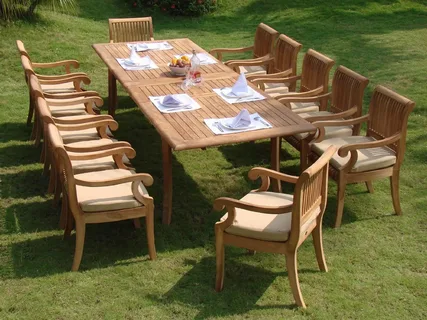How to Extend Your Outdoor Dining into Winter

Patio dining is a must-have for many restaurants and bars. They are great for both your customers and your business. For your customers, dining al fresco is an enjoyable and relaxing experience. In response to the pandemic, dining outside is also safer and more comfortable for many. For the business owner, it allows you to add more tables, which means more revenue.
It’s a no-brainer in places with milder winters, places like California, Arizona, New Mexico, and Texas. But what about Chicago, Minneapolis, or New York? Can restaurants in colder climates do more to keep their patios open longer while keeping their customers warm and comfortable?
While it might not be possible for every restaurant in North America to provide outdoor dining every day of the year, it’s likely that most restaurants could keep their patio open most of the year.
Here are a few ideas to keep in mind as we move into the colder season. Don’t pack up your patio just yet. There are likely a few things you can do to keep it open longer than you might think.
Table of Contents
Some cold-weather considerations
Before you start shelling out the dough for space heaters and semi-permanent or permanent structures, you should be realistic with your expectations. You don’t want to break your budget winterizing your patio without first considering what is possible given your return on investment, your space, and your local regulations.
First, come up with a budget for your patio. You should consider the number of tables your patio offers, how many of those tables you can actually fill on a given night, and the average each table spends. After you come up with a figure, use this to help guide your budget. After all, there’s no sense in investing thousands of dollars into your patio if the return on investment is low.
Also, your space will determine a lot of what you can do. If your space is too small, then you probably won’t be adding much to your revenue. If your space is too big, it might cost too much to shelter and heat. Also, how protected is your patio from the elements? If it’s protected on two or three sides, winterizing your patio can be easier and cheaper. Additionally, do you rent or own your space? If you rent, you should think about the stability of your lease and what improvements it allows.
Finally, before you spend your hard-earned profits, check with your local regulations. Some cities and states limit what can be done on patios, especially if they are on or near busy sidewalks, and some require permits for things like heaters and awnings.
Once you’ve done your homework, it’s time to think about what options are out there for heat, shelter, and comfort.
Heat
When It comes to keeping your patio warm, you have a few different options. Which one you choose can depend upon your climate, budget, and overall effect.
First, the portable propane patio heater is a class choice for a reason. Portable heaters are fairly inexpensive, easy to use, and easy to move. They also don’t require any lengthy or expensive installation. On the other hand, portable patio heaters aren’t the most efficient option. They heat a relatively small space, and they don’t work too well on a windy day.
Wall or ceiling mounted patio heaters are the next logical step for colder or windier climates. While portable heaters aren’t directional, meaning they heat a uniform space on all sides of the heater, permanent heaters are directional, allowing you to pump out heat right where you want it. Arranged strategically around your patio, these more permanent heaters can keep a modest sized space pretty warm. Also, because they are mounted to a wall or ceiling, they don’t take up any of your patio’s footprint, allowing for more space for customers.
They also come in a variety of power types. They can use natural gas, propane gas, or electricity, depending on what makes sense for your location and utilities. On the other hand, these heaters are more expensive, can be more difficult to install, and will likely require permits to operate.
Fire pits and fireplaces are another option. They offer both heat and style. Nothing feels cozier than drinking a warm cocktail in front of a fireplace. However, they require quite a bit of space, and they only heat a rather small area. Additionally, the open flame can be dangerous for your staff and your guests.
Shelter
In colder and wetter climates, thinking about shelter is just as important as thinking about heat. While your customers might tolerate the cold, they won’t tolerate rain, snow, or sleet. If you want your patio open every day of the year, or if you want to maximize the amount of days your patio is open, you’ll likely need some form of temporary or permanent shelter.
Patio umbrellas work well for shade but not much else. Instead, you could extend roof overhangs, install roll-out awnings, use pop-up canopies, or pitch waterproof event tents. This will keep the rain out and the heat in.
While you are thinking about keeping out the rain and snow, don’t forget about the wind. No matter how many heaters you have, a sharp winter wind can make your patio miserable pretty quickly. If your patio isn’t protected from the wind, you may need to consider something like an event tent, temporary walls, or roll-down canvas partitions.
Finally, when walling in your patio, don’t forget to allow for some ventilation, especially if you are using propane or natural gas heaters. Running ceiling fans on low can help with ventilation, and they can spread heat across your patio. If ceiling fans aren’t an option, a few strategically placed box fans can do the trick.
Comfort
Thinking about ways to keep your customers comfortable can help you keep them happy and warm. For example, ditch the hard metal patio chairs for softer and warmer materials like wooden chairs with cushions. Even something as simple as a tablecloth can help your guests feel warmer and more comfortable.
Additionally, consider offering your patio guests blankets that you can launder at the end of each day. If offering and laundering blankets is out of the question, you could market a Bring Your Own Blanket policy on your patio.
Hand warmers could also be offered to your customers. Disposable warmers can be purchased in bulk at reasonable prices, and your guests can hold them or stuff them into their jackets or coats on those particularly chilly nights. If you don’t want to splurge on hard warmers for everyone, you might keep a few on hand for those more sensitive guests.
The right kind of menu can help keep your customers warm too. Hot appetizers and entrees are great for a cold winter day. Items like stews, dishes served in cast iron skillets, and other hearty meals are delicious and also retain heat. If you are a full-service restaurant, warm cocktails can heat your guests up from the inside out. Mulled wines, hot totties, and hot buttered rums are great additions to a cold-weather cocktail menu, as are non-alcoholic options like hot chocolates, hot apple ciders, and pumpkin spiced chai lattes.
Of course, with new food comes a new menu. If you don’t have the time to design and print a new menu, or if you want some inspiration, you can find free menu templates online with services like MustHaveMenus. These templates are professionally designed, easy to customize, and easy to print and post online.
It’s about the experience
When designing your perfect outdoor patio capable of weathering those winter months, it’s not just about keeping your customers comfortable and warm. You also want to provide an experience. If your patio exudes warmth and coziness, your customers are more likely to feel warm and cozy.
While it might not put out a ton of heat, there’s nothing as cozy as drinking hot cocoa in front of a fireplace. Also, candles and string lights are inexpensive, and they add ambiance on those extra dark days of winter.
And think about your decor and furniture. Overstuffed outdoor furniture made of warm materials used in conjunction with heaters or fireplaces can make a space feel balmy, even in the dead of January.
Finally, all of this work you are doing on your patio offers great digital marketing opportunities. Make sure you are taking plenty of photos of the process and posting them on social media. This will show your customers that you care about their comfort and dining experience, while also advertising the best new patio in your area.
As far as social media goes, shoot for two to four posts per week. This is enough to stay on your customers’ minds when they are making dinner plans, but not enough that your online presence becomes a nuisance. If you want to highlight your patio, one to two posts a week will help you get the word out and generate buzz.
If social media isn’t your thing, or if you struggle to find the time to brainstorm, draft, and post content, you aren’t alone. Services like MustHaveMenus makes filling out your feed easy with free social media templates.
While you might not be able to offer outdoor dining every single day of the year, especially in colder locations like Minneapolis or Chicago, a few changes to your patio can keep your customers warmer and more comfortable, allowing you to keep your patio open much longer than you might expect.
For any important information please contact us Email GadgetsNg info@gadgetsng.com
[Button id="1"]




Hi there friends, how is the whole thing, and what you desire to say concerning this piece of writing, in my view its
in fact amazing in favor of me.
Howdy! This is my first comment here so I just wanted to give a quick shout out and
say I genuinely enjoy reading your blog posts.
Can you recommend any other blogs/websites/forums that cover the same subjects?
Many thanks!
I am a mother looking to talk.